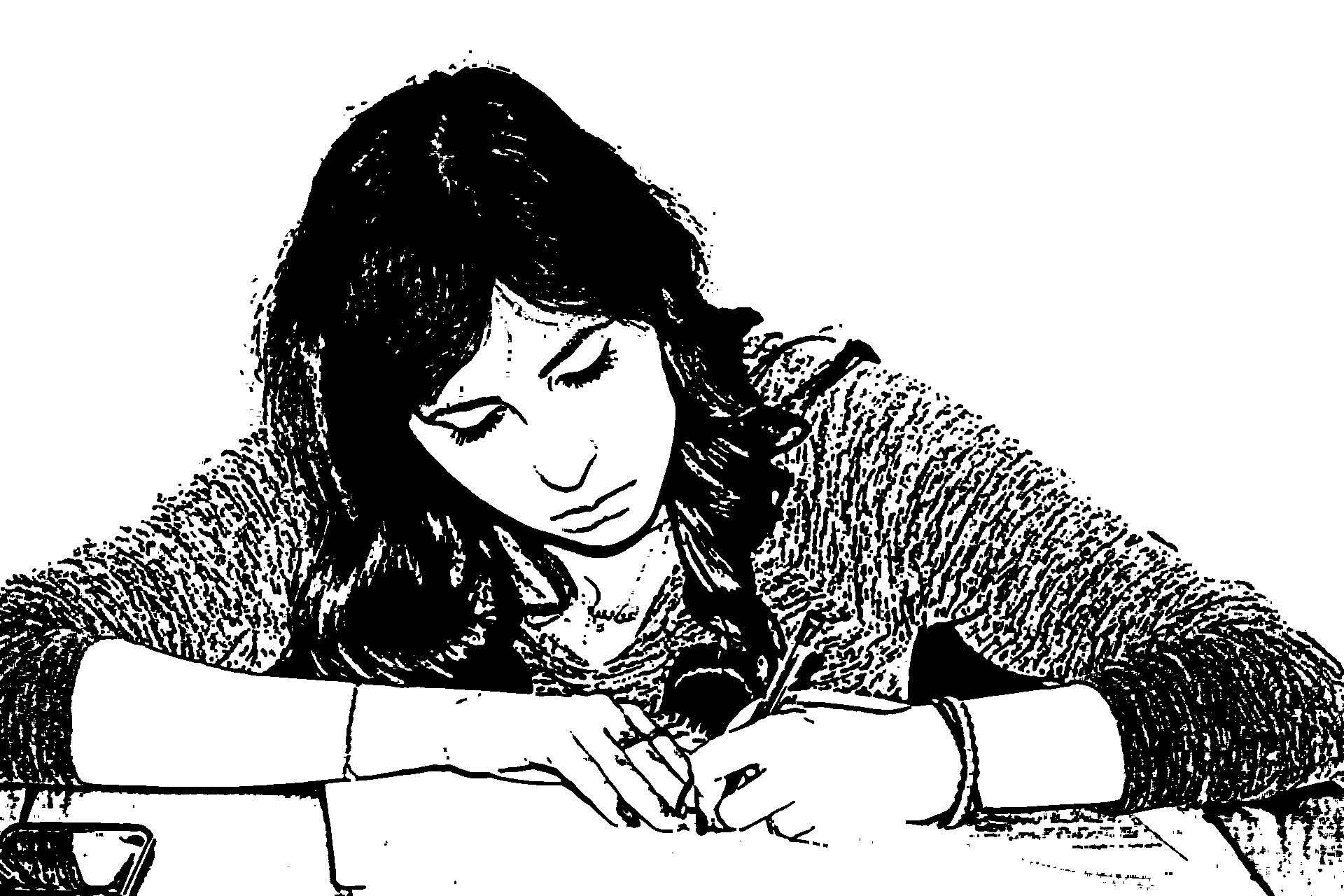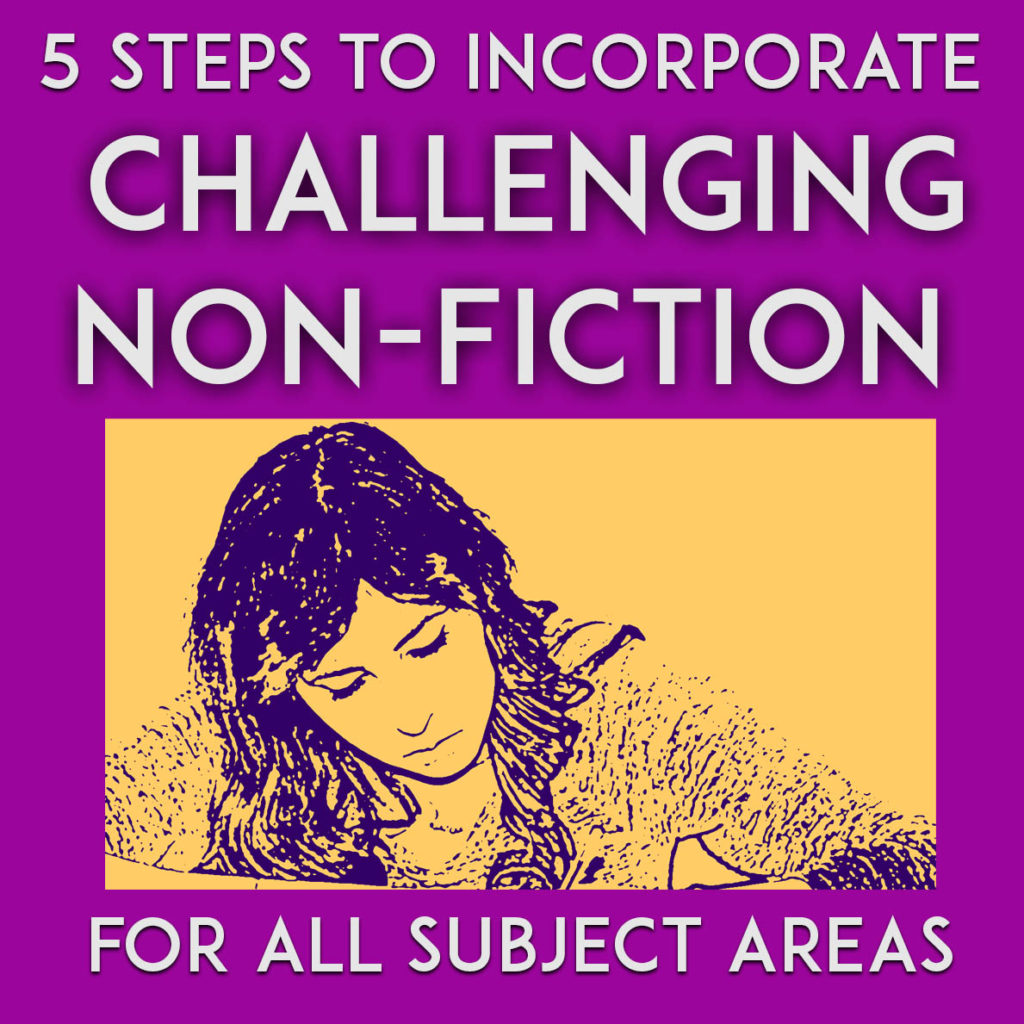Common Core: Challenging Non-Fiction Texts For All Subject Areas

I admit to feeling resentful when I learned that the new Common Core standards would require teachers to incorporate more challenging non-fiction into their lesson plans. Really? Wasn’t I doing more than enough already? But I have since (reluctantly and grudgingly) found some great articles to use in class. In fact, one of my favorite new lessons revolves around a piece published in the New Yorker about the relationship between the Enron Scandal and fixed mindset.
Since I decided to embrace these new standards and see what I could gain from them, I have realized that they are not all bad. And I have even developed a few more lessons around challenging non-fiction.

Here are five steps to incorporating challenging non-fiction into your lesson plans.
1. Design your units with the longterm goal in mind. If you are thinking about the end goal of your cell unit as just being that students will be able to identify the parts of the cell, then it won’t be easy to find articles that relate, but if you think about the bigger ideas, the ones that you’d like students to retain for five or ten or twenty years, then it will be much easier to find pieces that work. Essays on the importance of sports for developing grit and dreams might not seem to directly relate to your plans for the next test, but they deal with questions that will engage students and get them thinking about why what they are learning even matters. So think about connectivity, communication, problem solving, character development, cooperation—that’s the stuff that you really want your students to retain in the long (long) term.
2. Look at what is being published in the best magazines. The way to find superior writing is by looking in quality magazines such as The New Yorker, The Atlantic, Harper’s, Long Reads, The Economist, and some of Slate and Salon. Obviously, these contemporary magazines won’t be publishing articles on how to write a chemical equation or the names of the first ten presidents. Instead, what they will be publishing is pieces on new developments in science or controversies about those first presidents. The best non-fiction isn’t written only to convey information, it is also written to bring up big ideas, to point out trends or patterns, and ultimately, always, to question.
3. Decide what you want students to get out of the piece. When you do find a piece that you think might work for your classes, you’ll need to figure out how to help them through it. After all, by definition a challenging piece will be difficult. I’ve found that the best way to do this is to figure out the main idea that you want students to get out of the reading. Again, this is likely something big, and often it is a question.

4. Figure out how the author conveyed that idea to a reader. As you are reading and rereading the passage to find that main idea, highlight the parts that you find important. These are often the “special” sentences—the ones that use figurative language or especially vivid description or other rhetorical devices. It’s not so important to name those devices, but they are integral to the creation of meaning in writing. Students might end up focusing on different sections or phrases than you do, but having an idea what you’d like them to notice before you hand the writing over to them goes a long way.
5. Write questions with all of this in mind. Another key element of the common core is that just about everything students write is based on evidence. It’s not enough to skim a piece of writing and then relate it vaguely to general knowledge or life experience. So in my experience, questions that bring readers through a passage, getting them to notice the key sections and main ideas and how the author conveys those thoughts to a reader are are what work best. And always make sure that any discussion comes back to the text. “Textual evidence” is another way of saying that you base your ideas or answers on what’s there and not what you already believe.
I know that teachers already have plenty to worry about, and sometimes adding one more initiative seems impossible. But if you find an article that inspires you, that makes you think, that makes you question what you already believed, you know you’ve got a good one.
What solutions have you found for incorporating the requirements of the Common Core? What have you found that you most like about the Common Core?